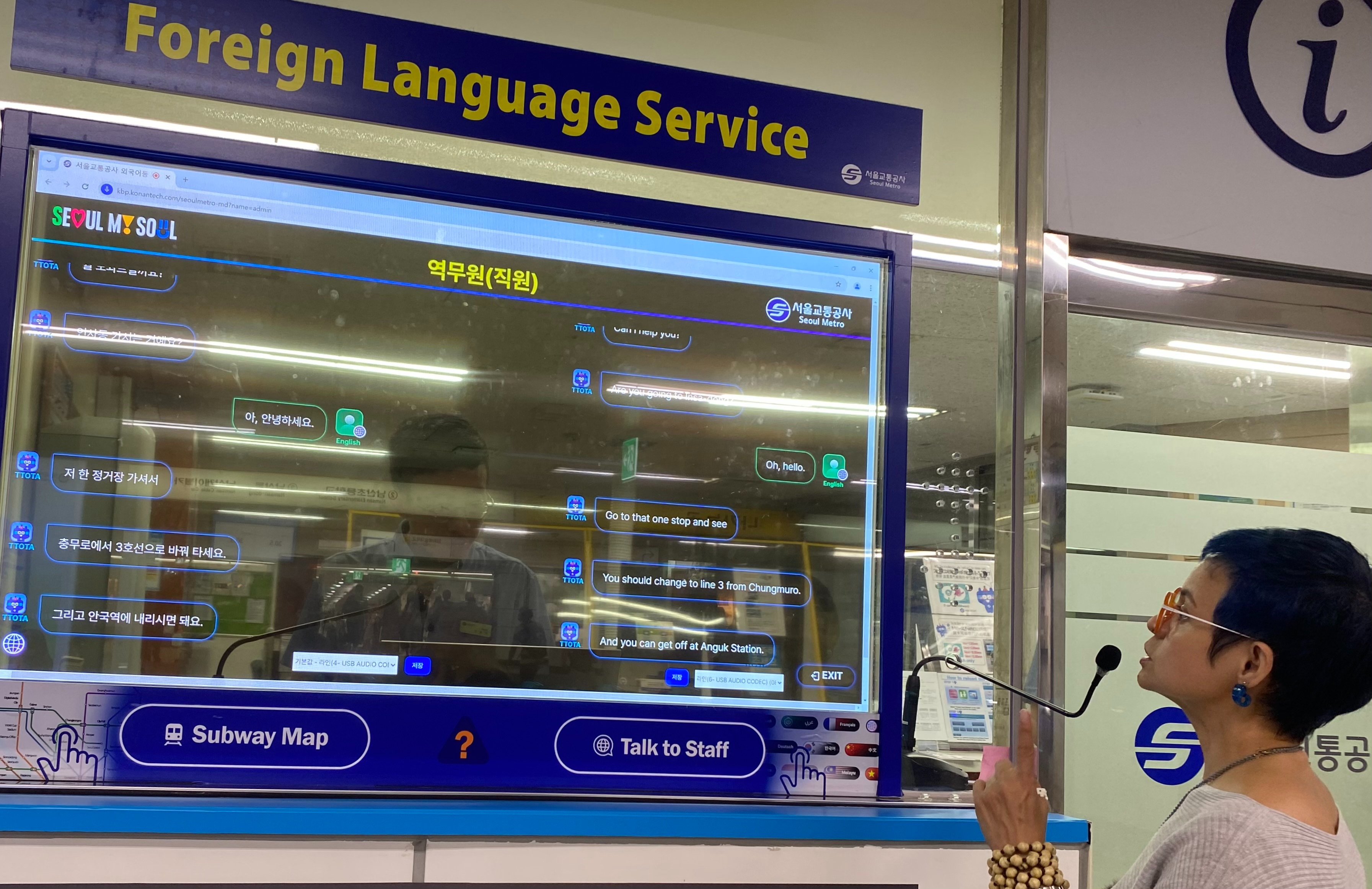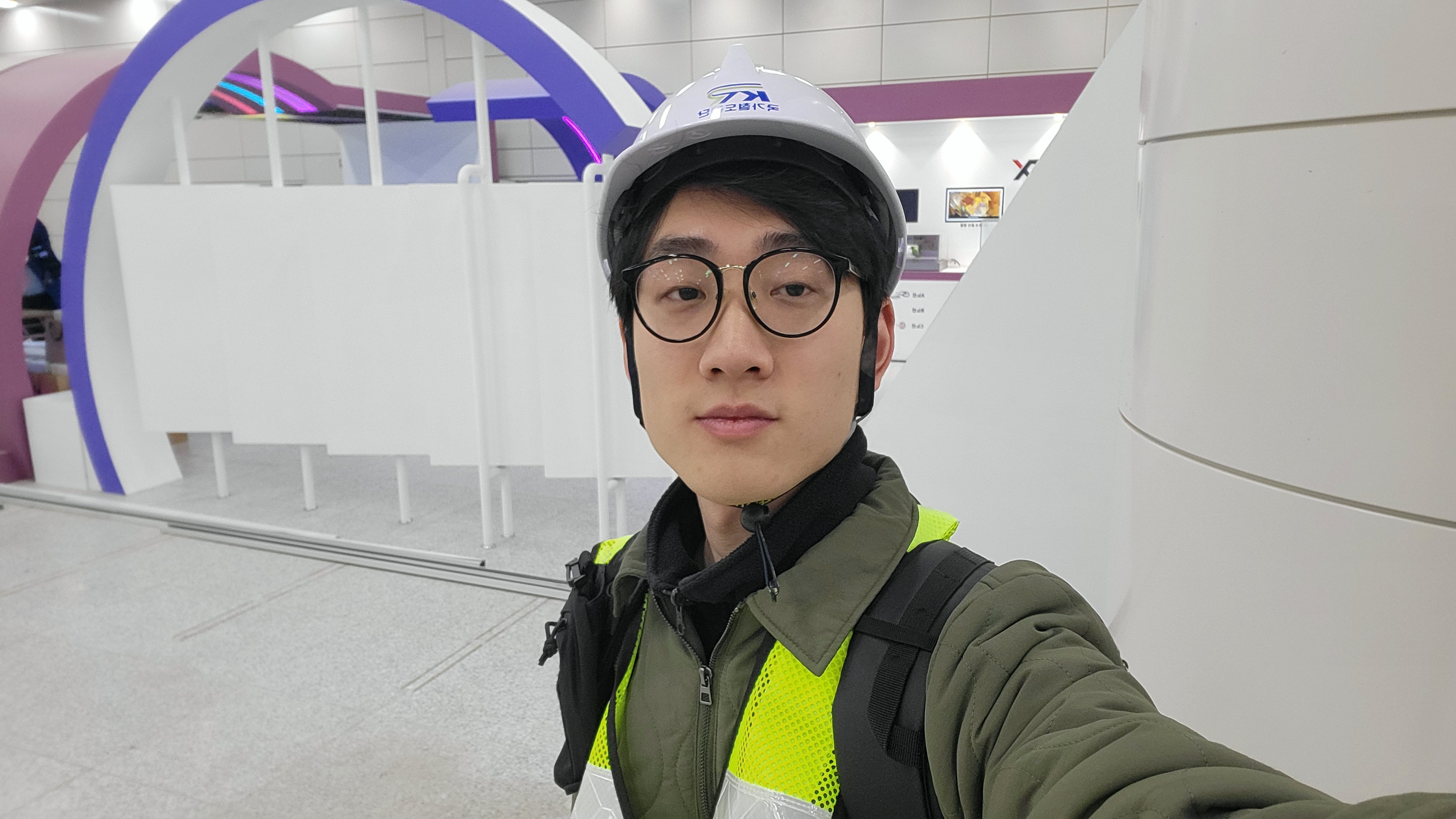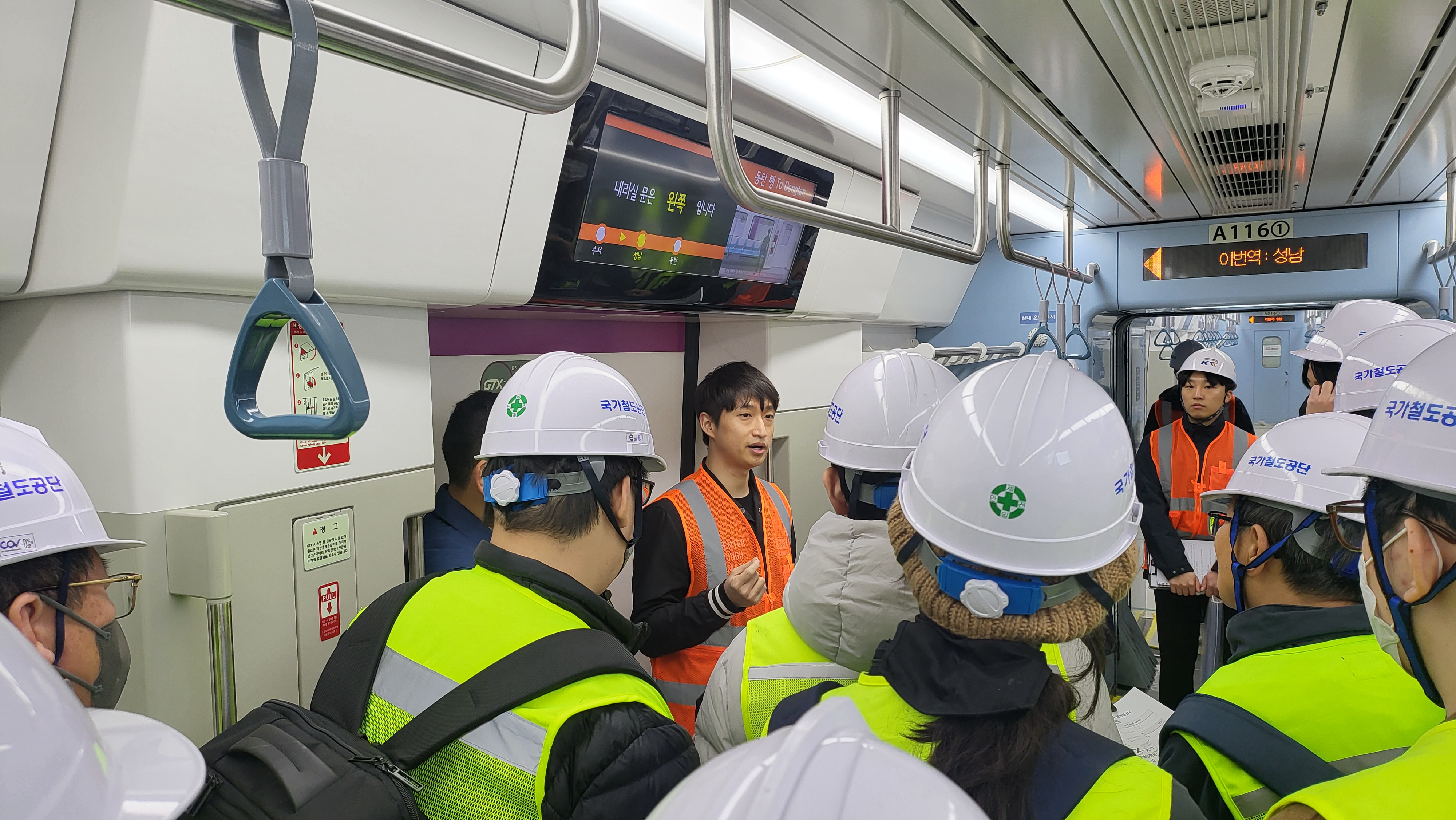The subway is the lifeline that connects people and runs in every major Korean city, serving as the people's feet. This mode of public transportation is part of daily life for long-time residents in the country, but foreign visitors can learn and better understand the nation through the subway.
This year marks the 50th anniversary of the nation's subways since Line 1 was launched on Aug. 15, 1974, to connect Seoul and Cheongnyangni stations. To mark this milestone, Korea.net on Aug. 12 interviewed Honorary Reporters who often ride the subway at Metro Farm, an urban farm at Sangdo Station in the city's Dongjak-gu District.
By Charles Audouin
Feeling Korean consideration for others on subway
"Whenever I take the subway, I can feel high consideration for riders. The efforts of those who designed Korean subways to enhance rider satisfaction are evident."

Honorary Reporter Mae Young on Aug. 22 uses the artificial intelligence-based simultaneous interpretation service at Myeongdong Station. Once a staff member and a rider speak, the system automatically shows the translated text on a transparent screen dividing the subway office and users. The service is offered in 13 languages at 11 subway stations in Seoul frequented by many foreign tourists including Gwanghwamun, Hongik University and Gimpo International Airport stations. (Mae Young)
Honorary Reporter Mae Young from the Philippines, who recently completed her study in Korea, praised the advantages of Korean subways, saying, "This was my first time to ride a subway cool in the summer and with heated seats in winter."
She added that she was also impressed by the clean interior of the subways and public bathrooms at the stations.
Family and friends who visit from her home country, she said, also laud the convenience of Korean subways. One cited the easy use of the elevator with a stroller and no problems moving around given the lack of obstacles, while another mentioned guidelines in other languages that remove the fear of getting lost.
Young also gave her visiting family and friends public transportation smart cards featuring the images of K-pop stars. The cards are usable not only for public transportation, but also at convenience stores, cafes and restaurants.
She said, "The card is useful not only for traveling in Korea but also retaining memories of the trip."
"I wish the subways ran past midnight," she added in saying she wished they ran for 24 hours. "But if I were to rate Korean subways, I'd give them nine out of 10."
Chinese expert on Korean subways

Honorary Reporter Xu Ao from China on March 19 takes a selfie while attending a public safety inspection ahead of the opening of the GTX-A (Great Train eXpress), which runs from Suseo Station in Seoul to Dongtan Station in Hwaseong, Gyeonggi-do Province. (Xu Ao)
Xu Ao from China has a keen interest in subways, saying, "If you look at the development process of a subway, you can easily understand a nation's specific historical background and geography."
He makes and uploads videos on BiliBili, a Chinese video platform, and YouTube (@cclppr) on the traits and interesting anecdotes about Korean subways. He said he started his channels to directly explain Korean subways to Chinese due to the language barrier.

A public safety inspection team on March 19 listens to an explanation about the safety and convenience of the GTX-A.
"There are screen doors installed at all subway stations, making it an outstanding mode of public transportation in safety," he said when asked about the best advantage of Korean subways.
On the nation's integrated public transportation fare system that allows easy transfers with just a single card, he added, "Unlike in Japan, you can use a variety of public transportation in Korea like the subway with a single transportation card and automatically get discounts for up to four transfers."
The K-pop fan said he smiles whenever seeing posters of Red Velvet, his favorite girl group, on the walls of subway stations. "The large-screen ads of Korean actors and K-pop idols visible at subway stations are also a way to boost Korea's likeability," he said.
In February, Essential Living, a London-based property developer, said the Seoul subway system was No. 1 in a survey of the world's 10 cities with the most subway users. The capital had the highest score in accessibility, symbolizing the subway system as a symbol of Korean consideration for others and innovation.
caudouin@korea.kr
